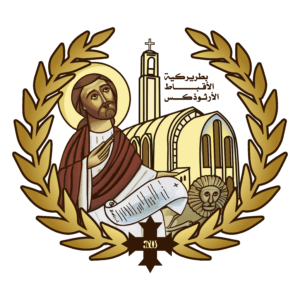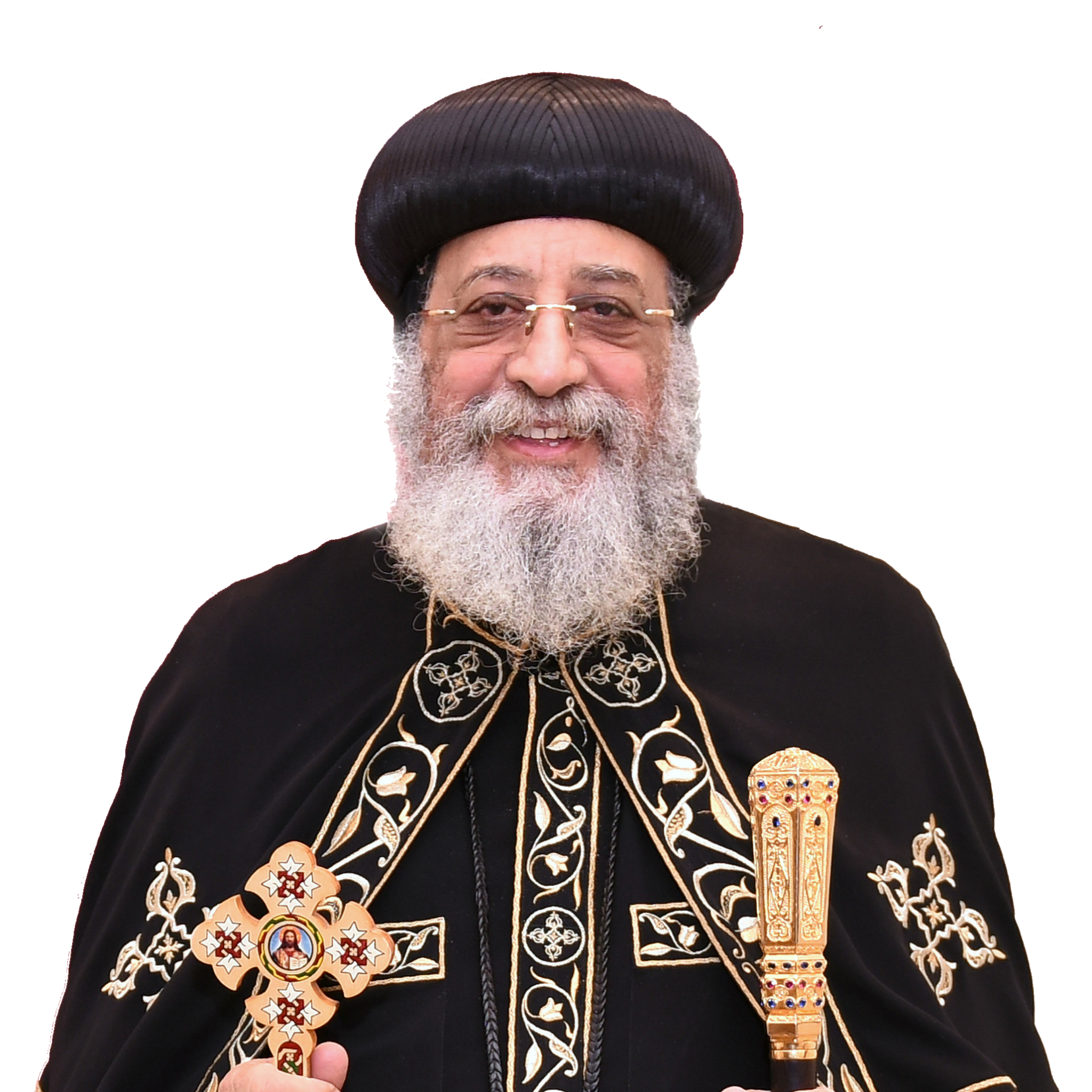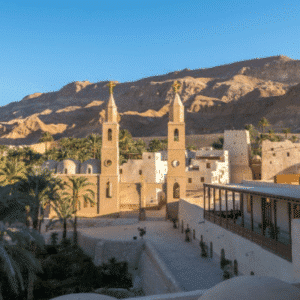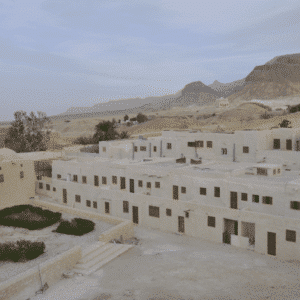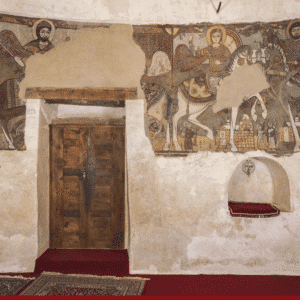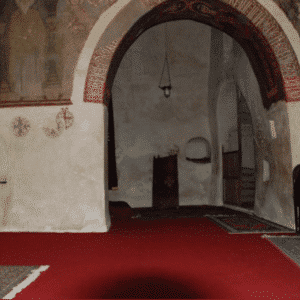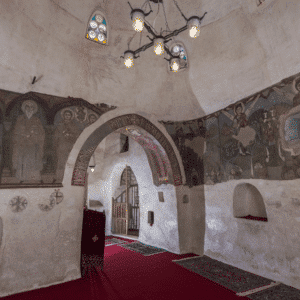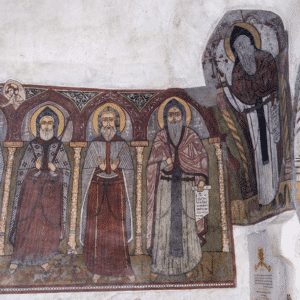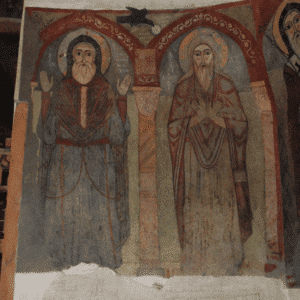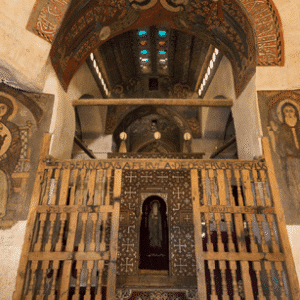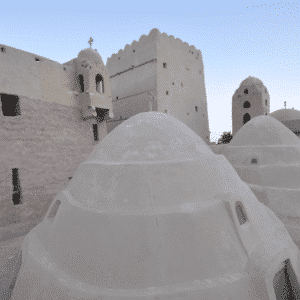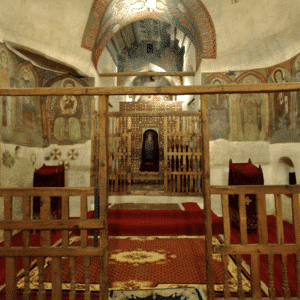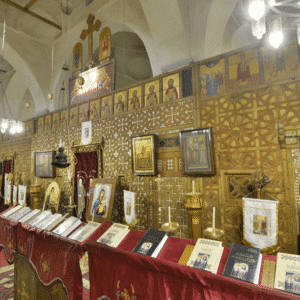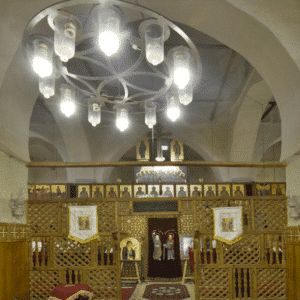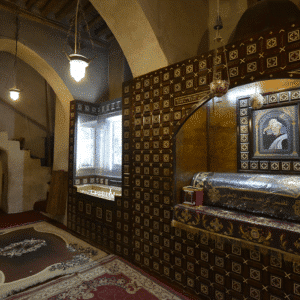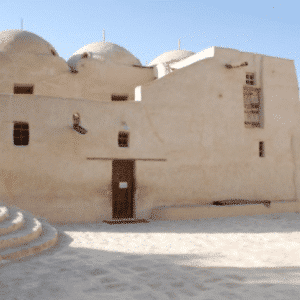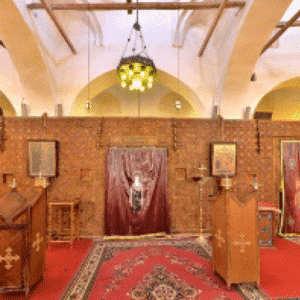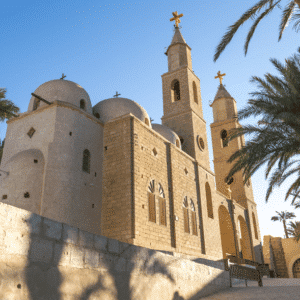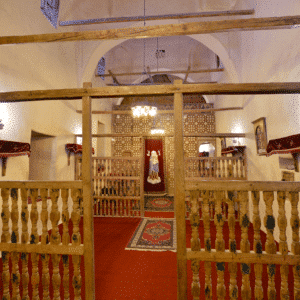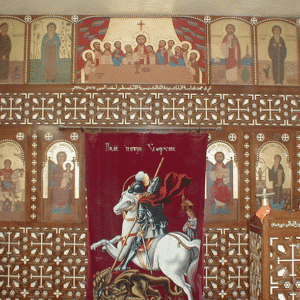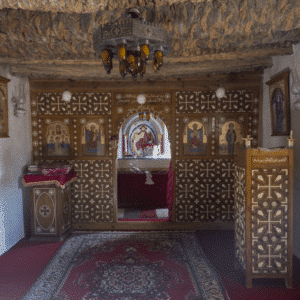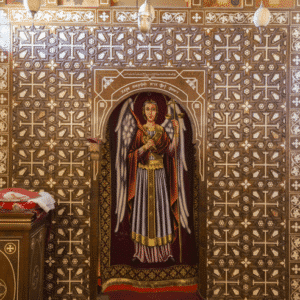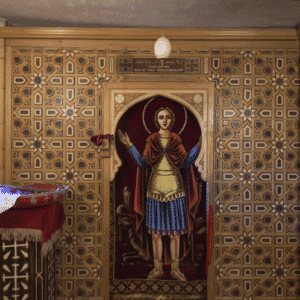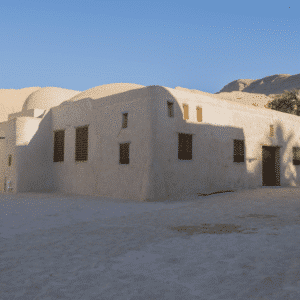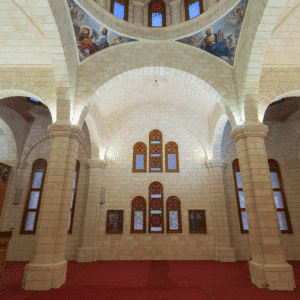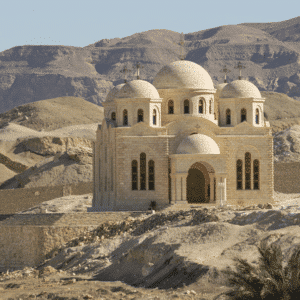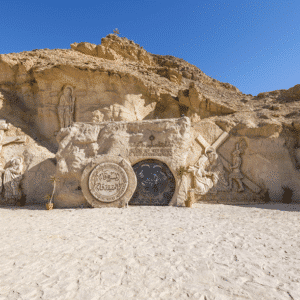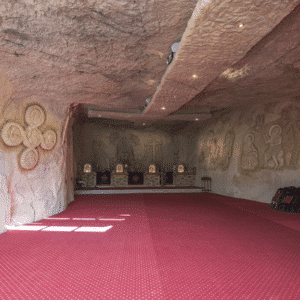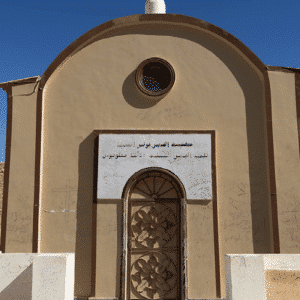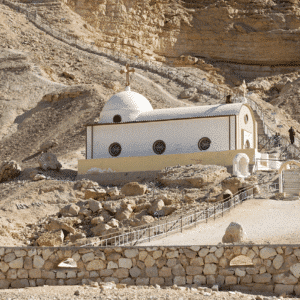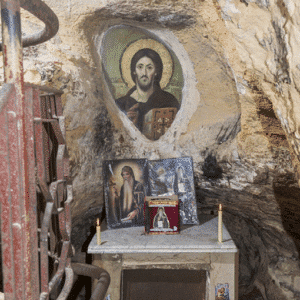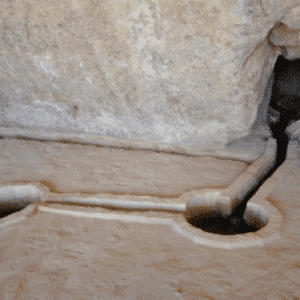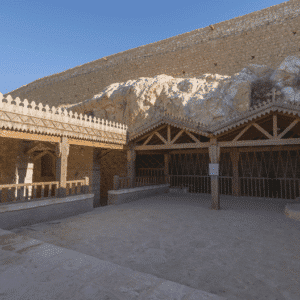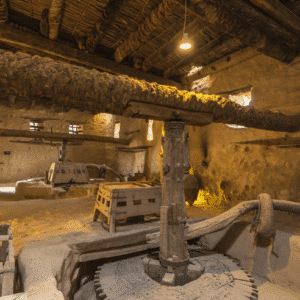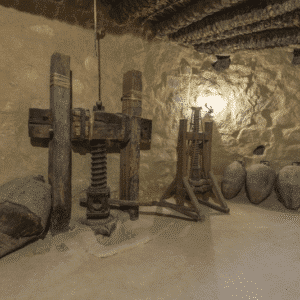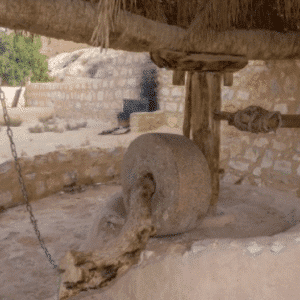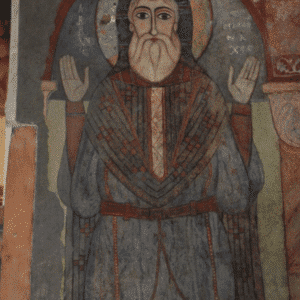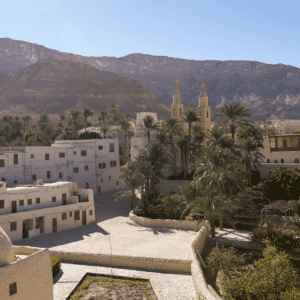St. Anthony’s Monastery, The Eastern Wilderness, Red Sea
St. Anthony’s Monastery, The Eastern Wilderness, Red Sea
The monks gathered around Saint Anthony, living in caves which they carved for themselves in the mountain. The cave became the room in which the monk dwells in complete isolation from the world. This is what became known as the cell. When the mountain became full of caves (cells), it became known as the ‘Mountain of Cells’. It is now known as the Galala Mountain.
Previously, there was no place to gather the monks in one closed place. However, in 2003, there was a comprehensive restoration of the monastery. The digging that occured led to important discoveries related to monastic life in the past and how the first monastic seed was planted in this place. This represents the establishment of Saint Anthony’s Monastery towards the end of the third century and beginning of the fourth century. A valley was discovered which was approximately 150 meters in length, 25 meters in width and 2.5 meters in depth.
The monastery’s ancient boundaries and the features within them:
1) Saint Anthony’s Monastery is considered as one of the most beautiful and perfect Coptic monasteries as it contains all the equipment required for monastic life which was used by monks in the past. For example: a water spring, a grain mill, an olive mill and press and an Orban oven.
2) The monastery’s entrance (the waterwheel): it is the monastery’s main entrance and it was used for the entry and exit of individuals and necessities into and out of the monastery. It is named “the whaterwheel” because the entrance’s shape is a cylindrical wheel that revolves around itself. As the wheel revolves, you can pull back or dangle the thick rope attached to it.
3) The ancient library, the tomb, the hall of heritage, the palace for the bishops, the monks’ cells and a retreat house for the youth.
The monastery’s new fence and the features within it: retreat house.
Solar energy: Saint Anthony’s Monastery is considered a pioneer in the use of solar energy.
The monastery’s churches:
-The Church of the Four Incorpreal Creatures
-The Ancient Church of Saint Anthony
-The Church of the Fathers the Apostles
-The Church of Abba Mark Saint Anthony
-The Church of Saint Anthony and Saint Paul (Paula)
-The Church of Rachel the Martyr and Saint Abanoub (in the building of the monastery’s deputy)
-The Church of Archangel Michael in the Fort
-The Church of Saint Mina the Wonder Worker
-The Church of the Patriarchs
Churches outwith the boundaries of the ancient monastery:
-The Church of the Virgin and Saint Anthony
-The Church of the Cross in the Cave
-The Church of Paul the Simple
-The Church in the Priests’ Accommodation
-The Cave of Saint Anthony
The monastery’s abbot: Bishop Ystos
Nine of the monastery’s monks were promoted to the Papal Throne:
1) H.H. Pope Gabriel VI (the 91st patriarch)
2) H.H. Pope John XV (the 99th patriarch)
3) H.H. Pope Mark VI (the 101st patriarch)
4) H.H. Pope John XVI (the 103rd patriarch)
5) H.H. Pope John XVIII (the 107th patriarch)
6) H.H. Pope Mark VIII (the 108th patriarch)
7) H.H. Pope Peter VII (El-Gauly) (the 109th Patriarch)
8) H.H. Pope Cyril IV (the 110th patriarch) (Father of Reform)
9) H.H. Pope Yosab II (the 115th patriarch)
